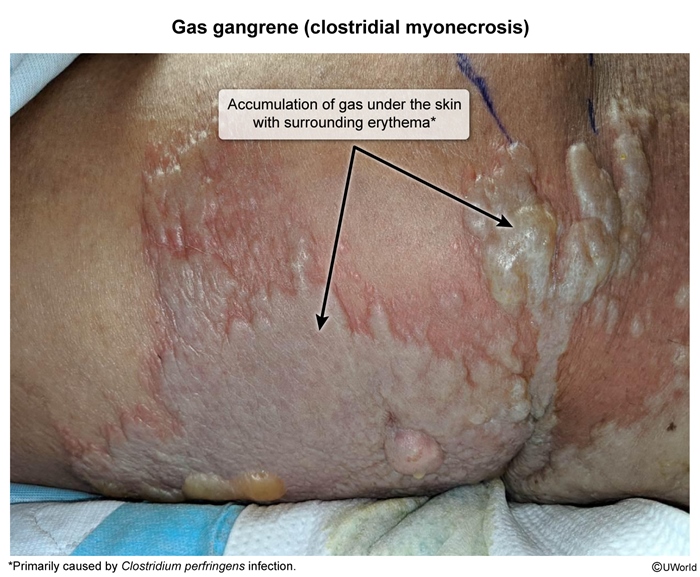Clostridial Myonecrosis
Article Sections
Introduction
Clostridial myonecrosis, also known as gas gangrene, is a rapidly progressive and potentially fatal infection caused by bacteria of the genus Clostridium. Traumatic cases typically occur due to Clostridium perfringens. Spontaneous cases (which usually spread hematogenously from gastrointestinal tract pathology) typically result from C septicum. These bacteria are spore-forming and anaerobic (thrive in the absence of oxygen) and produce potent toxins that cause extensive muscle tissue death (necrosis) and gas production.
Pathophysiology
The development of clostridial myonecrosis depends on the convergence of 2 critical factors:
- Tissue hypoxia: Low oxygen availability in muscle tissue creates an environment conducive to clostridial growth. This can occur due to trauma with significant blood flow disruption, vascular insufficiency, or surgical complications (eg, hematoma, seroma).
- Contamination with clostridia: Clostridium
Continue Learning with UWorld
Get the full Clostridial Myonecrosis article plus rich visuals, real-world cases, and in-depth insights from medical experts, all available through the UWorld Medical Library.
Images
